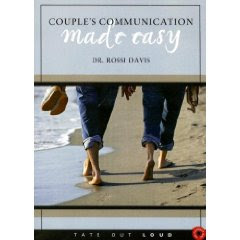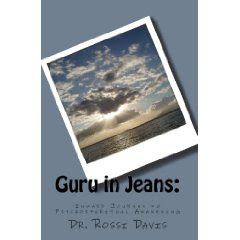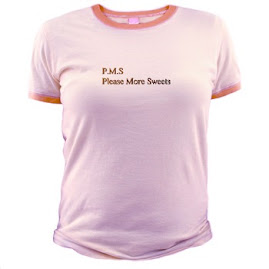
CITED Material
"Dermatologists Can Help Separate Fact From Fiction for Sun Exposure, Sunscreen and Vitamin D
NewsRx.com
11-19-09
When it comes to vitamin D, consumers are bombarded with mixed messages about the best source for this essential nutrient. While some may argue that small doses of intentional sun exposure are safe, dermatologists point out that the risk of developing skin cancer from ultraviolet (UV) radiation far outweighs the benefit of stimulating vitamin D production - particularly when enriched foods and supplements are safe and effective sources of this vitamin (see also Skin Cancer).
Speaking today at the American Academy of Dermatology's SKIN academy (Academy), Washington, D.C., dermatologist Elizabeth L. Tanzi, MD, FAAD, clinical faculty in the department of dermatology at Johns Hopkins Hospital Center in Baltimore, addressed common myths about sun exposure, sunscreen and vitamin D, and announced the Academy's increased recommendation on the minimum Sun Protection Factor (SPF) of sunscreen.
"Despite years of ongoing public education efforts on the dangers of UV radiation, a number of misconceptions remain as to how to best protect ourselves from this known carcinogen and whether or not we absolutely need sun exposure for vitamin D production," said Dr. Tanzi. "The fact is these myths are harmful because sun exposure is the leading cause of skin cancer, and the consequences of this misinformation could be potentially fatal."
Myth: Sun exposure is the best source of vitamin D.
Vitamin D is an essential nutrient that is vital for strong bones and a healthy immune system. Deficiency of vitamin D is associated with bone softening in adults, rickets in children and, more recently, with high blood pressure, arthritis, type I diabetes and certain cancers.
While UV radiation is one source of vitamin D, dermatologists argue that it is not the best source because the benefits of obtaining vitamin D through UV exposure cannot be separated from an increased risk of skin cancer. Instead, the Academy recommends that an adequate amount of vitamin D should be obtained from a healthy diet that includes foods naturally rich in vitamin D (e.g., dairy products and fish), foods/beverages fortified with vitamin D (e.g., fortified milk and fortified cereals), and/or vitamin D supplements.
"Although studies showing the benefits of increased vitamin D intake have caused some to propose 'sensible sun exposure' or intentional sun exposure as a cost-effective method for preventing vitamin D deficiency, increased sun exposure is not the answer," said Dr. Tanzi. "UV radiation is the most preventable risk factor for the development of skin cancer, which is the most common form of cancer in this country. There are more than an estimated 1 million new cases of skin cancer every year. Despite this fact, there remains a tremendous amount of misinformation about UV exposure - especially in relation to vitamin D."
Myth: All sunscreens are created equal.
While on the surface most sunscreens may look the same, they are in fact quite different. One of the things that makes sunscreens different is the level of protection from UV exposure that they provide. Dr. Tanzi explained that a common misconception is that the SPF rates the degree of protection from both UVA rays (which pass through window glass, penetrate into the deepest layer of the skin and are associated with premature aging and melanoma) and UVB rays (the sun's burning rays, which are blocked by window glass, are the primary cause of sunburn, and also are linked with skin cancer). In fact, the SPF number on sunscreens only reflects the product's ability to deflect the sun's burning rays (or UVB). Sunscreens labeled broad-spectrum provide coverage against both UVA and UVB light.
"SPF may create a false sense of security about the level of protection a person is getting, because many sunscreens do not adequately protect against harmful UVA rays," said Dr. Tanzi. "The main challenge in providing effective protection from UVA rays is that traditional chemicals used in sunscreens that absorb UVA light degrade quickly and become ineffective."
Fortunately, there are ingredients that can be added to traditional sunscreen ingredients to keep them stable and provide broad-spectrum protection. For example, Dr. Tanzi noted that the ingredient oxybenzone can help stabilize avobenzone (one of the best absorbers of UVA rays that, while highly effective, breaks down quickly), which provides a longer duration of effective protection from UVA rays. Other effective ingredients that help provide broad-spectrum UV coverage include ecamsule, cinoxate, menthyl anthranilate, octyl methoxycinnamate, octyl salicylate, and sulisobenzone.
For those with sensitive skin, sunscreens with non-chemical ingredients work best and will prevent irritation. Dr. Tanzi said the ingredients zinc oxide and titanium dioxide provide both UVA and UVB protection.
Myth: Using a higher SPF will ensure you don't burn.
Dr. Tanzi explained that those who use sunscreen with a higher SPF may think they will not burn when exposed to UV light, but she said that is not true. In fact, actual sunscreen protection depends on many other factors - including skin type, the amount and frequency of sunscreen application, and the impact of activities (such as swimming and sweating). As a result, sunburn can occur even when wearing a higher SPF sunscreen.
Another important factor Dr. Tanzi emphasized is that UVB protection does not increase proportionately with a designated SPF number. For example, an SPF of 30 screens 97 percent of UVB rays, while an SPF of 15 screens 93 percent of UVB rays and an SPF of 2 screens out 50 percent of UVB rays. However, not applying enough sunscreen or not covering all exposed areas may result in a lower SPF than the product contains.
"For adequate protection, sunscreens are best applied 15-30 minutes prior to going outside, approximately every two hours or immediately after swimming or sweating," said Dr. Tanzi. "Research demonstrates that most people only apply 25 to 50 percent of the recommended amount of sunscreen, which is one ounce for the entire body or enough to fill a shot glass. Therefore, if only half the proper amount of SPF 15 is applied, the SPF has been reduced to an SPF of approximately 5, which is then inadequate protection. (1) "
Keywords: Arthritis, Blood Pressure, Bone, Dermatology, Hypertension, Insulin Dependent Diabetes Mellitus, Oncology, Pediatrics, Rickets, Skin Cancer, Skin Neoplasms, Type 1 Diabetes, Vitamin D Deficiency, American Academy of Dermatology.
This article was prepared by Blood Weekly editors from staff and other reports. Copyright 2009, Blood Weekly via NewsRx.com.
To see more of the NewsRx.com, or to subscribe, go to http://www.newsrx.com .
All Contents Copyright © 1995-2009 Life Extension Foundation All rights reserved.
These statements have not been evaluated by the FDA. These products are not intended to diagnose, treat, cure or prevent any disease. The information provided on this site is for informational purposes only and is not intended as a substitute for advice from your physician or other health care professional or any information contained on or in any product label or packaging. You should not use the information on this site for diagnosis or treatment of any health problem or for prescription of any medication or other treatment. You should consult with a healthcare professional before starting any diet, exercise or supplementation program, before taking any medication, or if you have or suspect you might have a health problem. You should not stop taking any medication without first consulting your physician. "











